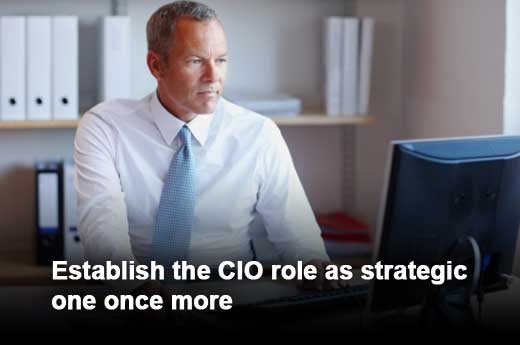In November of 2011, Gartner predicted that Project Portfolio Management (PPM) would go from managing just business projects to managing value and change, as well. We’ve seen just that with the growing number of PPM software companies and consultancies that have found success in helping businesses look at PPM from a business process perspective. Additionally, a Forrester report found that a comprehensive PPM tool investment can provide an ROI of more than 250 percent.
PPM has been valuable to businesses for quite some time now and is continuing to expand beyond project management, but why should it matter to CIOs? And, why should it matter to them in 2012? Alex Adamopoulos, CEO of emergn, an international PPM and agile consultancy, has identified five reasons why PPM will matter to CIOs in 2012.
Click through for five reasons PPM will be important to CIOs in 2012, as identified by Alex Adamopoulos, CEO of emergn, an international PPM and agile consultancy.
CIOs who focus on integrating IT more into the portfolio management process can help blur the lines of separation, be part of the value discussion and be viewed as a partner to the business.
IT involvement earlier in the lifecycle will contribute to better decisions and choices made with the business. It will improve visibility into necessary investments and resources required to meet demand and will allow a more transparent environment for how things get done.
Understanding the demands of the business will drive CIOs to take a closer look at what is possible and will help them judge how well IT can or can't execute on delivering a given project to a "right first time" level of quality.
Traditional portfolio management models are plagued by disconnects between business sponsors and IT. While this is similar to solving the alignment issue, Adamopoulos believes that a CIO who gets IT involved early in the portfolio management process will help craft a working model that has better checkpoints and gateways for decision-making, thus resulting in a framework with more integrity and less bureaucracy. Furthermore, a portfolio is about balance, not just pursuing every profitable opportunity. You can do that in the following five ways:
- Build on strengths
- Attack weaknesses
- Capture opportunities
- Control threats
- Maximize return whilst balancing risk
With so much being written about the value of the CIO each year, CIOs who look at portfolio management as a lifecycle that permeates the whole business have an opportunity to be more strategic and insightful. They can position themselves as the custodians of technology and advancement vs. being a cost center.








